SegaSonic The Hedgehog is one of the many Sonic The Hedgehog games that everyone’s heard about but not very many have played. It’s an arcade game developed by AM3 and released in 1993, and though it was planned for an American release, it sadly never left Japan. I’ve read many so-called reviews of this game, many which were positive and many which have expressed their frustrations of not seeing this get a worldwide release. Despite these praises, none of the reviews I’ve read have ever stated that they actually played the real arcade game. All were played with an emulator using a joystick instead of a trackball, which this game was designed for. Maybe it’s just me, but I don’t think any of these reviews were valid since the game was not played the way it was intended. I’m here to rectify this as I’ve had the fortune to play the real arcade in all its glory at the Galloping Ghost Arcade in Brookfield, IL, a suburb of Chicago. How they got their hands on one of these units is beyond me, but that’s beside the point, as it’s time to give this game the proper review it deserves.
The story is suitably generic but fits well enough for a simple arcade game. Robotnik captures Sonic The Hedgehog, Ray The Squirrel, and Mighty The Armadillo and locks them up in his island fortress. The three now have to break out of prison and escape. The game allows up to three players, each controlling one of the aforementioned characters, and essentially plays like a fancier and more hyperactive version of Marble Madness. There are seven stages, or traps, as Robotnik calls them; each one of them with a different theme and new traps to navigate. The game uses a trackball and one button to jump, so the controls don’t get any more basic than that. Don’t let the simple controls fool you though, as this game is mind-numbingly fast, and by the time you’re done you’ll feel like your wrists are going to fall off. The game stages are isometric, and you simply have to run through them. You have to endlessly spin that trackball as fast as you can and only occasionally change directions, which give your wrist a needed break. The game gets really hectic with three players, and players that fall behind can really be a hindrance to the others as they’ll hold the game up until they catch up, causing the others to get hit by traps, which drain their health meter.
As you go through each stage, you can collect rings for bonus points, only they don’t have any bearing on your health this time around. If you complete a stage with enough rings, you’ll get an additional bonus as well. As you get through each stage, there are brief intermissions with Robotnik panicking and devising new traps to catch you. When you complete the final stage, you come face to face with Robotnik as always, but you only see him long enough for him to hit a self-destruct button, giving you precious seconds to escape. If you don’t make it, the game is over. You can’t continue, and you have nothing left to start over. When I played this, it was set on free play, and I had unlimited credits. It took me a few tries to get through the game with the harsh timer, but if I was playing this back in the day and was stuffing this thing stupid with quarters, I’d be pretty mad just to be told I had to start over when I was seconds away from finishing the game. For me this is one of SegaSonic’s main drawbacks. I went back and watched a playthrough on YouTube to refresh myself on the game before writing this review, and it gave me a chance to appreciate all the details in the visuals that I didn’t have time to notice when I was in a mad dash to finish it.
That being said, SegaSonic has some really nice visuals. Each of the characters is full of animation and details that only an arcade title could pull off at the time. The seven stages are all full of detail and are varied in style, too. If I had one complaint with the visuals, it’s that there needed to be a little more variety in the colors, as there seemed to be a lot of browns, grays, and reds. This is, however, a small complaint. There is also a lot of voice work, and each character is voiced by a different voice actor. I got a kick out of all the voices and mannerisms of each character, including Robotnik, despite them all being in Japanese. The music is especially nice as well, and I could tell it was from a Sonic game. It really fit well, and the themes almost sound like they were composed on the Genesis’ YM2612 sound chip. It really is a treat to hear.
As it is, SegaSonic The Hedgehog still feels like it’s missing something. It’s a really great game but can be finished in about 15 to 20 minutes. Even though I enjoyed it for my playthroughs, it’s not a game that I find myself wanting to come back to again, probably due to the fact that I don’t want my wrist to feel like it’s going to die the next day. I also think that many other arcade games of the time just had more substance. I’ve seen many topics over the years with people wondering why Sega never brought this to home consoles, but honestly I don’t see how it could work. It was released too early for the Saturn to receive a port, so the only system with the horsepower to handle it would’ve been the 32X, which would’ve been interesting to see. Then again, there’s the trackball issue, as this game would never play right with a joystick or control pad. With that in mind, SegaSonic The Hedgehog is forever doomed to obscurity and will remains one of Sonic’s least-seen outings. If you’re able to find a place that just happens to have one of these machines, then you owe it to yourself to try this out at least once, just because of how unique it is.

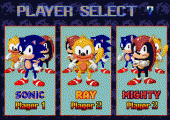
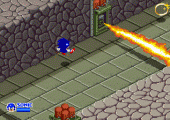
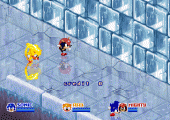
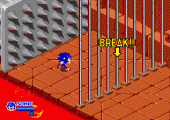
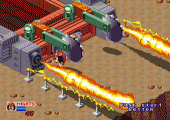
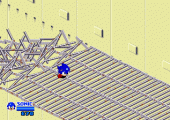
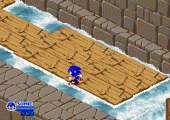
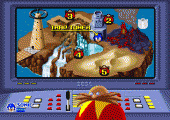
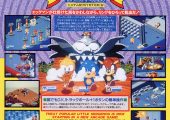
Recent Comments